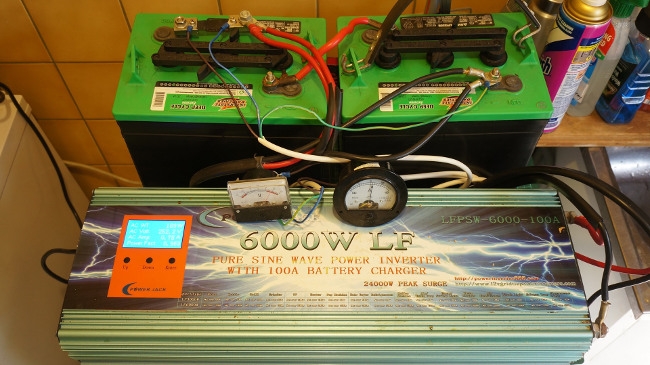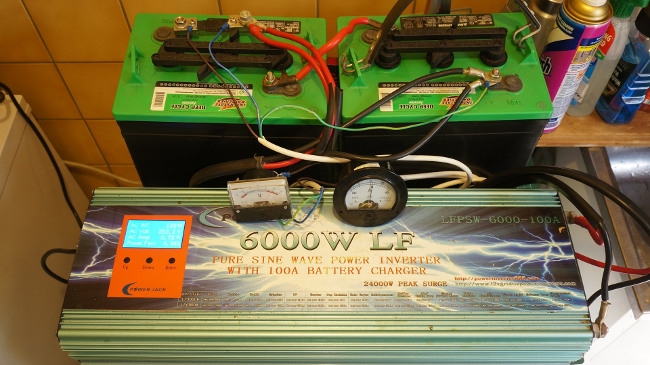
 Building an uninterrupted power supply for your editing suite
Building an uninterrupted power supply for your editing suite
In more remote parts of the world outside of the urban centres, measures must be taken to ensure consistent power.
We operate in the Blue Mountains, 75km west of Sydney and, because of the nature of Australian power distribution, we experience a lot of brownouts, blackouts and general power failures. If you are running a commercial edit and grade facility with clients present, as we are, a high quality power supply is essential. I decided to share my experience in building a completely 'off line' Uninterruptable Power Supply (UPS).
Key specs
Power Output: 240v AC (or 110v AC) Pure Sine Wave
Continuous supply: 6000 watts
Peak supply: 24,000 watts
Batteries: 2 x 6 volt, Deep Cycle - 250 Amp Hours
Inverter: LFPSW- 6000 - 100A low frequency inverter
Weight: 20KG
12v DC in, 240V AC out (12/110 also available)
100 Amp built in battery charger
Studio Load: < 300 watts
Operation time available at full load: about four to six hours
Accessories:
Expanded Scale DC volt meter (10-16 volts DC)
0-100 Amp (centre zero) meter with DC Shunt (-100A/0/+100A)
Total Cost: < US$1000
Off Line Security
By "off-line," I mean our studio is always operating off the batteries. Our inverter/charger supplies up to 6000 watts of clean, pure sine wave 240vAC power to our entire edit/grade room and the incoming mains supply simply keeps the batteries charged. The inverter is equipped with a built-in 100 amp battery charger that is totally automatic. If we have a mains failure in a storm, for example, nothing changes, as we are always operating off the battery bank. If the supply is not restored in a few hours, the battery voltage will gradually fall until such times as the inverter sounds an alarm and the supply to the studio is cut.
Running time
Depending on the size of your battery bank and your studio's load, you'll have plenty of time for the authorities to restore power (4-6 hours, in our case - if you need longer time, simply add more batteries). If power is not restored within the specified time, you can simply start a very small, portable generator, which will charge the batteries at a higher rate than your load. This can be monitored by looking at the Centre Zero Amp Meter. If it is reading in the Positive sector (above zero), the batteries are charging. When the mains supply is restored, the inverter switches on the battery charger function and your batteries are charged fairly quickly, at a massive 100 amps DC!
Failsafe
Our inverter/charger costs around $400 delivered from Taiwan in 2014 and it includes a switch to set your battery 'float' voltage. We generally float our system at 13.8v DC, but the Charger will go as high as 15.4v DC for up to four hours. This process, known as 'equalisation', will completely remove any sulphation of the plates if performed regularly (about once per month).
This system has proven so successful over the past year that we plan to connect our home up in a similar fashion. Many neighbours have paid up to $10K for solar panel arrays, but without any battery/inverter backup, they sit shivering in the winters here as 8 inches of snow covers their useless solar panels.
Tags: Studio & Broadcast


Comments